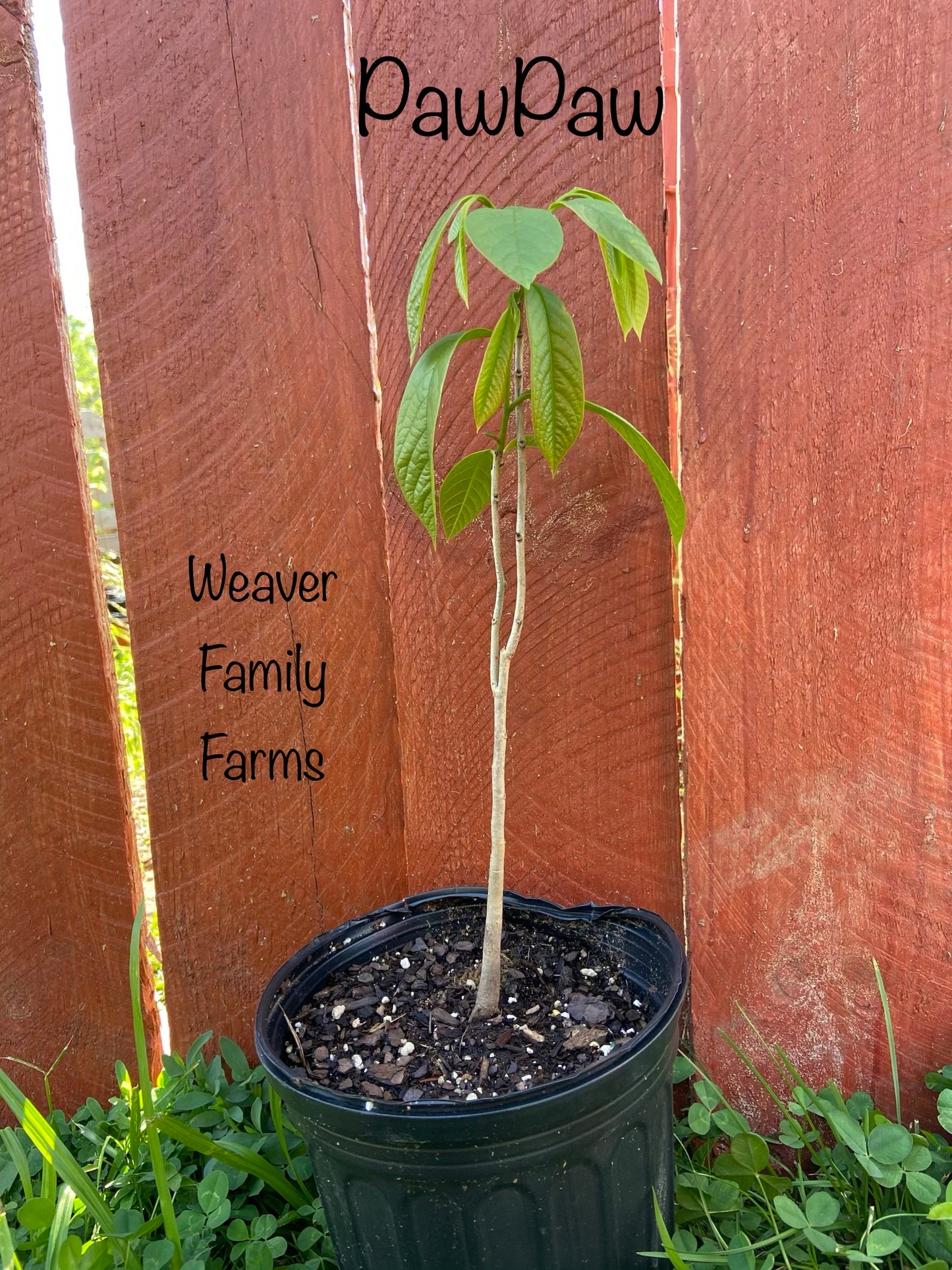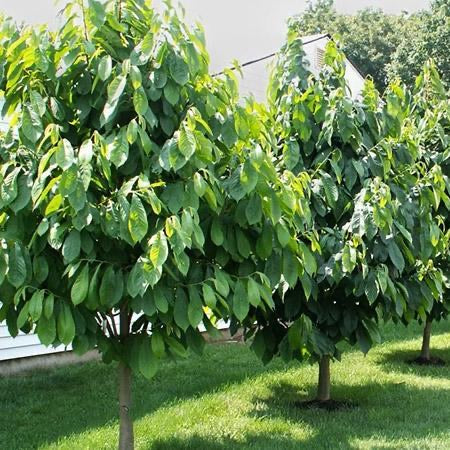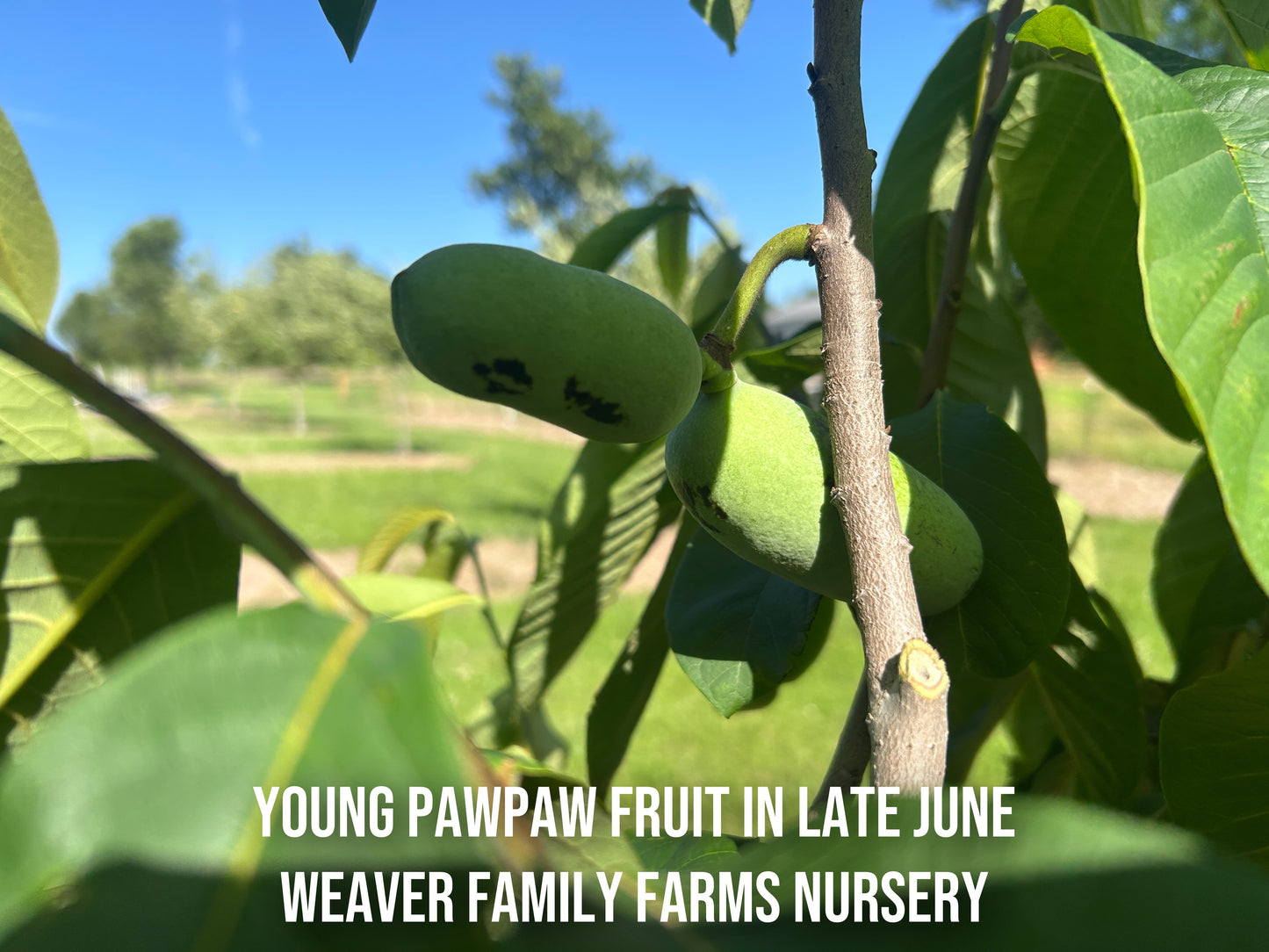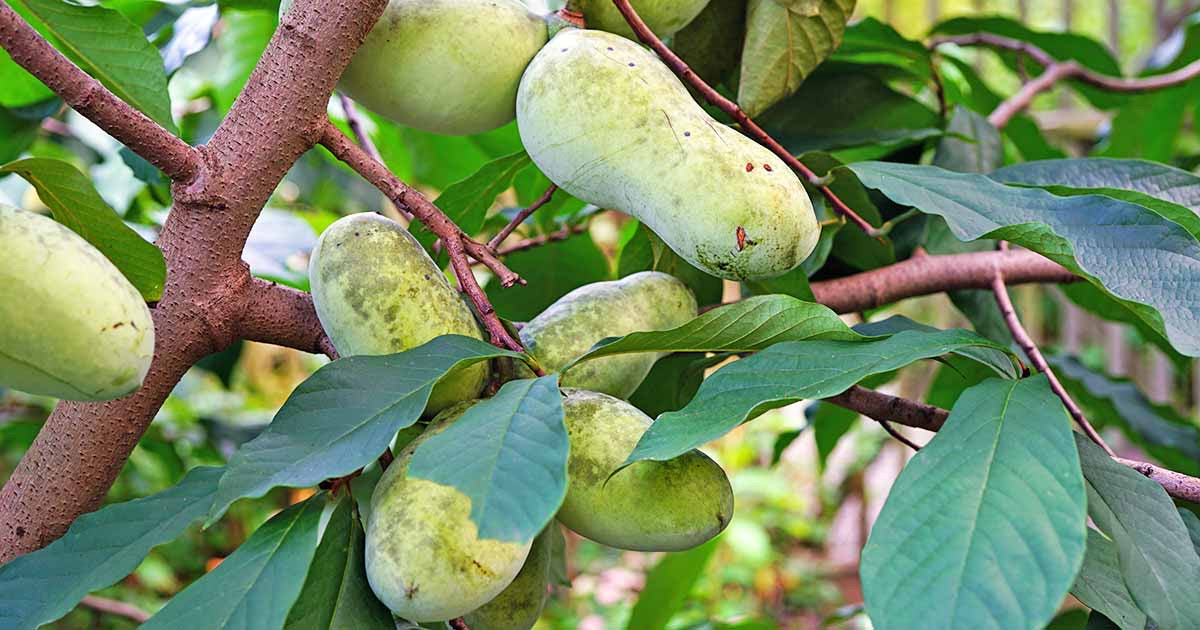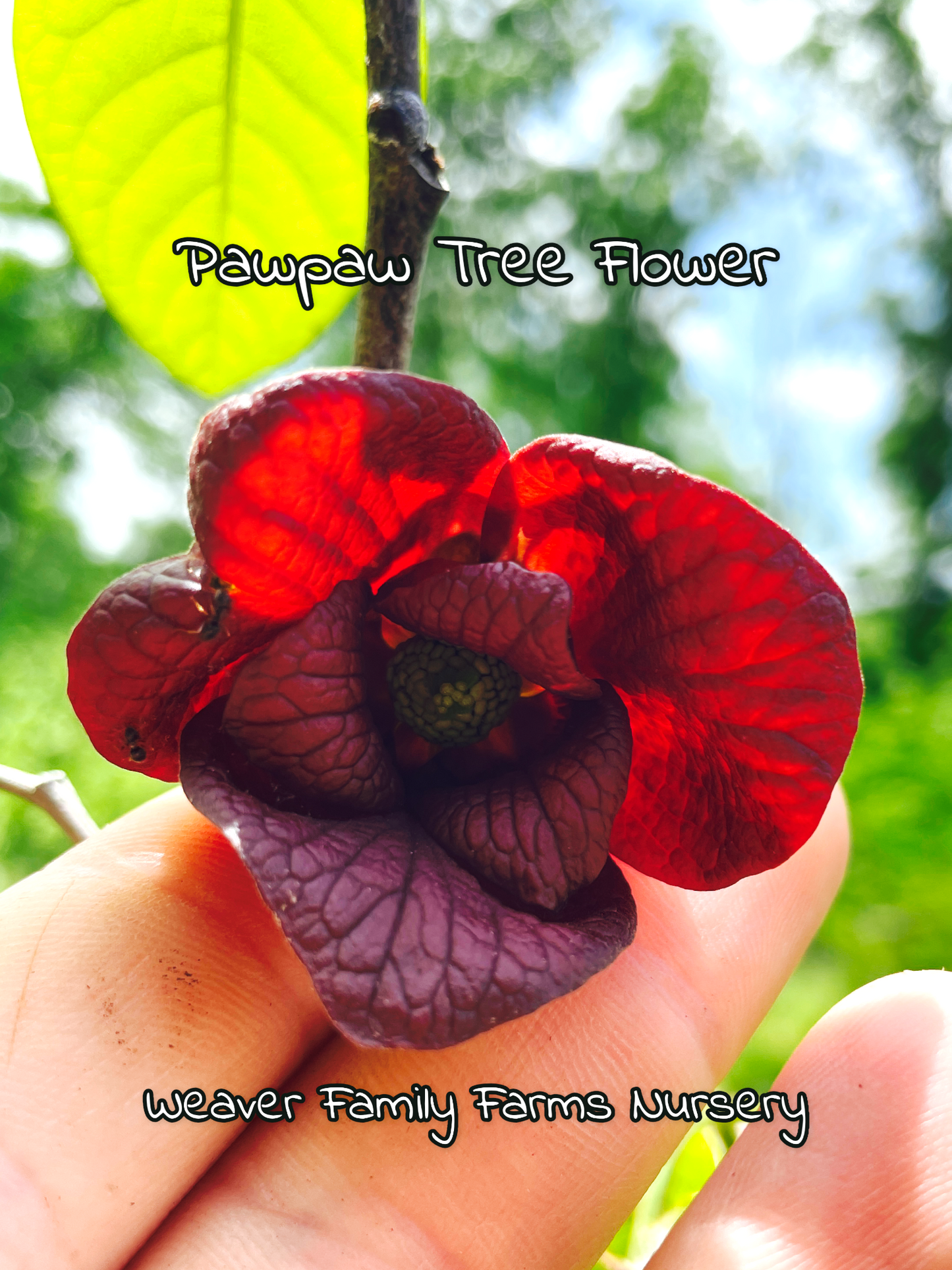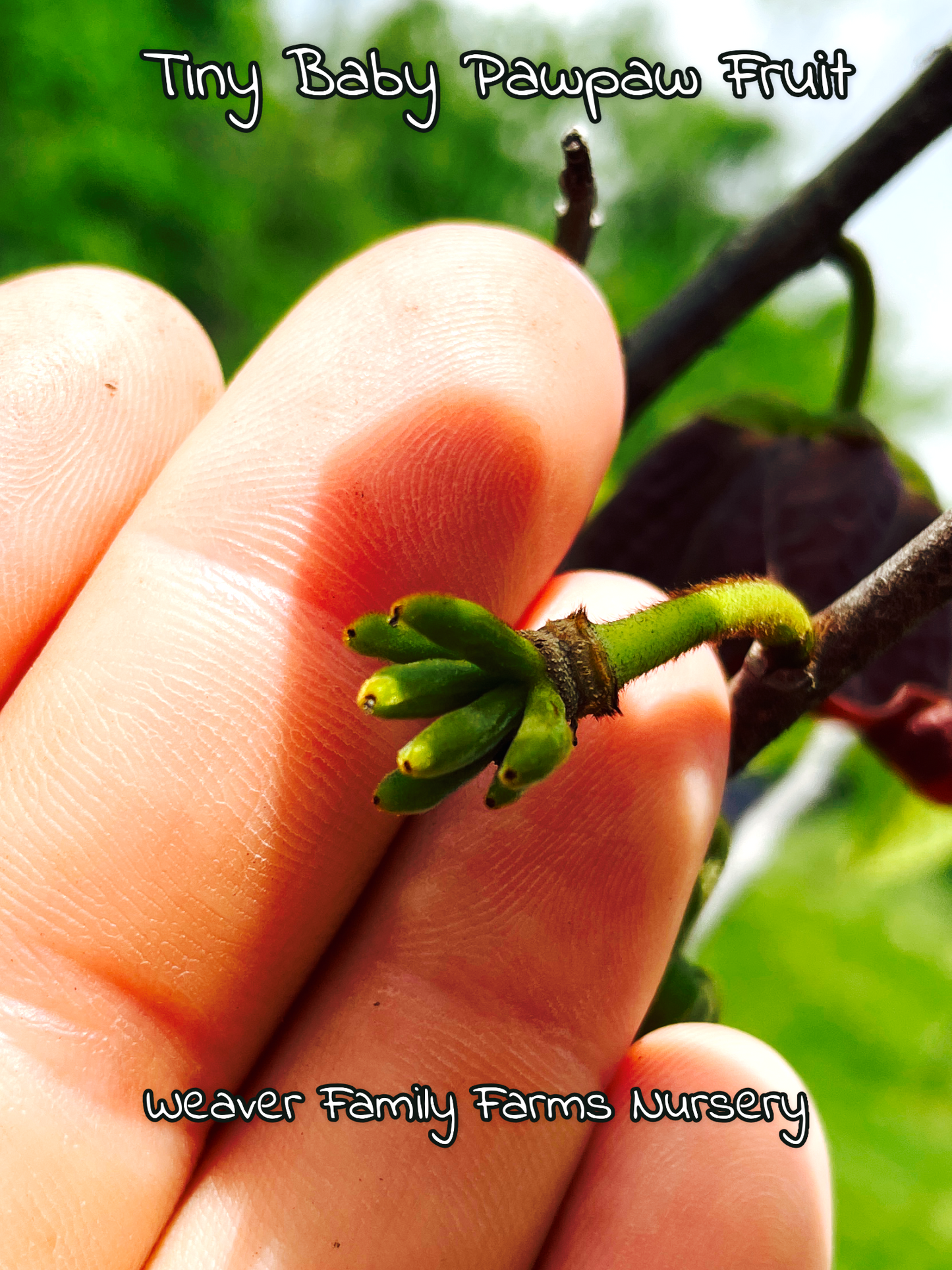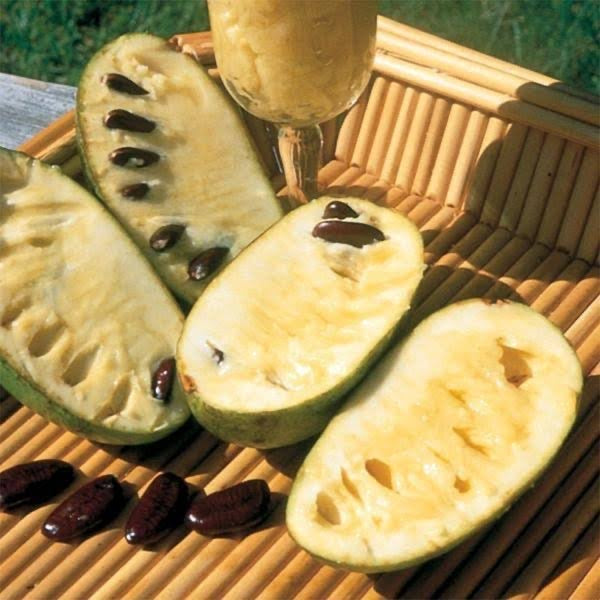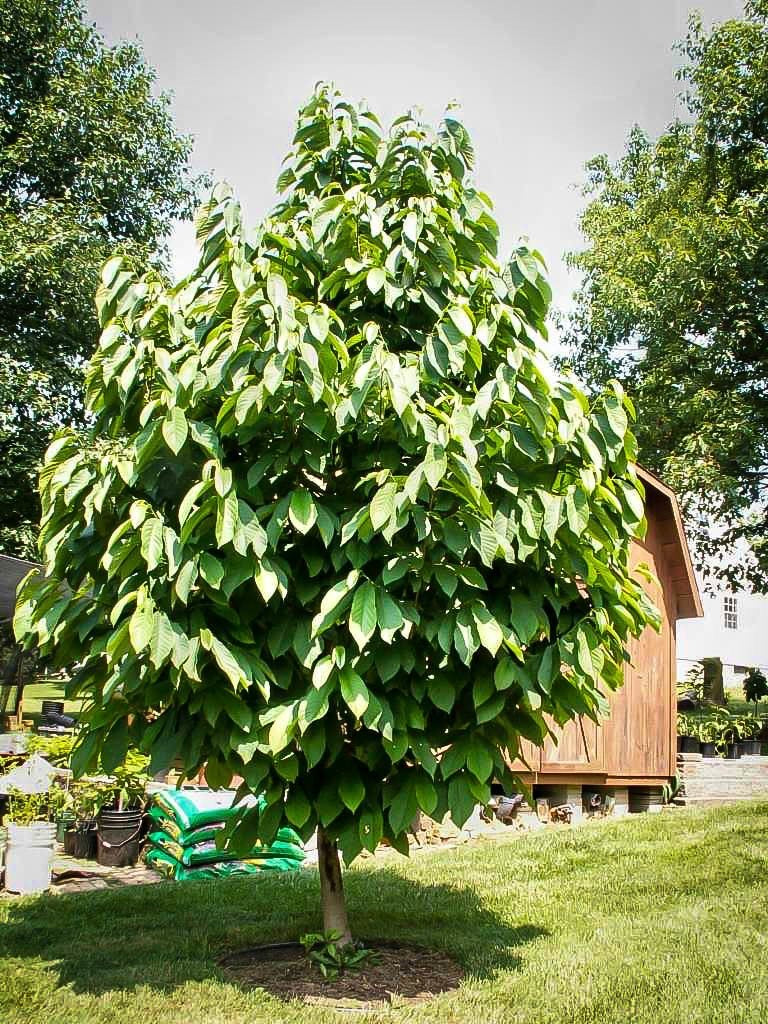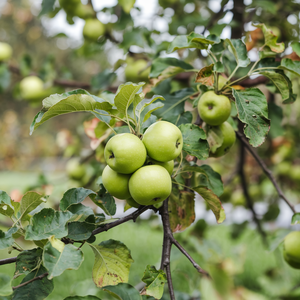Sold out! Take a look at these similar plants we have for you:
Couldn't load pickup availability
Introducing the Pawpaw Tree (Asimina triloba), a unique and hardy native fruit tree known for producing sweet, custard-like fruit. The American Pawpaw Tree is perfect for anyone looking to grow their own delicious, tropical-flavored fruit right in their backyard. With its large, green leaves and striking purple flowers, the Pawpaw Tree adds beauty and functionality to any landscape. Keep in mind, you’ll need at least two pawpaw trees for proper pollination and fruit production.
Looking for a grafted Pawpaw tree? We have those too!
Why Choose the Pawpaw Tree?
- Delicious, Tropical-Flavored Fruit: The Pawpaw Tree produces large, yellow-green fruit with a creamy, tropical flavor, often compared to bananas or mangos.
- Pollination Requirement: To ensure fruit production, it’s important to plant at least two Pawpaw Trees, as they require cross-pollination to bear fruit.
- Native and Hardy: This American Pawpaw Tree is native to the United States and is hardy in zones 5 to 9, making it a resilient and reliable fruit-bearing tree.
- Attractive Landscape Addition: With large, lush leaves and unique purple flowers, the Pawpaw Tree adds ornamental beauty to your garden.
- Low Maintenance: This tree thrives in partial shade to full sun, and once established, requires little care, making it perfect for home gardeners. For more edible plants, explore our Food Trees Collection.
Practical Considerations
The Pawpaw Tree grows best in moist, well-drained soil and can tolerate a variety of soil types. While it prefers some shade in its early years, it will thrive in full sun as it matures. Ensure you have two trees planted close to each other for successful pollination and fruit production. For more tips on growing edible plants, check out our blog on Nuts, Food, and More Edible Plants. Pair the Pawpaw Tree with other fruit trees like the Elderberry Tree for a diverse and productive edible garden.
You can learn more on how to grow your own pawpaw tree here!
Specifications:
- Name: Pawpaw Tree (Asimina triloba)
- Grow Zone: 5 to 9
- Growth Speed: Medium
- Light Requirements: Partial shade to full sun
- Average Full-Grown Height: 15 to 30 feet
- Average Full-Grown Width: 15 to 20 feet
- Deciduous or Evergreen: Deciduous
- Fruit Bearing Time: Late summer to early fall
Estimated Size
The Pawpaw Tree you receive will vary in size based on the pot and root system. With proper care, this tree will begin producing fruit in just a few years. Remember, planting two or more trees ensures successful pollination. To learn more about its distinctive flowers, visit our blog on What Do Pawpaw Flowers Look Like.
Explore More About Pawpaw Trees
For additional tips on caring for your Pawpaw Tree or to explore other fruit-bearing trees, visit our FAQ page.
Order your Pawpaw Tree for sale today and enjoy growing your own delicious, tropical-flavored fruit right at home!
Click Here To Learn More About The History Of Pawpaw Trees, The Fruit Native To The USA That Most American's Have Forgotten All About
Shipping
Shipping
All of our trees ship Bareroot which means they will ship with no soil and no pot. This allows the plants to have a safer trip through the mail as well as to cut down on shipping costs majorly. The roots will be carefully removed from the pot they are growing in, and then wrapped in moist material with the roots sealed up to keep them moist during transit.
Shipping Restrictions
Shipping Restrictions
To follow your state regulations, we can not ship this plant to California, AZ, AK, HI
Deliveries to WA, UT, ID, NV, MT, ND, and SD MUST be shipped Bareroot.
Check Out Our States We Can Ship To Guide
Will My Plant Have Leaves?
Will My Plant Have Leaves?
The arrival of your plant may vary depending on the season you order. In zone 6, plants have leaves during the growing season but not in late fall, winter, or early spring when they are dormant.

Bareroot Vs Potted Plants
Bareroot Vs Potted Plants
Our method involves combining potted and bareroot plants. They are initially grown in pots before being carefully shipped without the pot or heavy dirt, as per shipping regulations. The plant is then sent to you bareroot.
Click Here To See More Information About Bareroot VS Potted Trees

What Is A Dormant Tree?
What Is A Dormant Tree?
A dormant tree is a deciduous plant that appears asleep and does not have leaves upon arrival. Proper planting and care are necessary until it awakens in the growing season.
Click Here To See The Best Time Of Year For Planting Trees In The Ground

What Is A Grow Zone?
What Is A Grow Zone?
A grow zone is the precise USDA zone where you reside. Certain plants are not adaptable to colder zones, while others struggle in warmer zones. Familiarizing yourself with your zone and the plant's compatibility is vital. Click Here to learn more about grow zones.

What If I Have Other Questions?
What If I Have Other Questions?
We have a great FAQ page that answers many more questions and in great detail to help you have success with your new plants! See Our Frequently Asked Questions Here.
